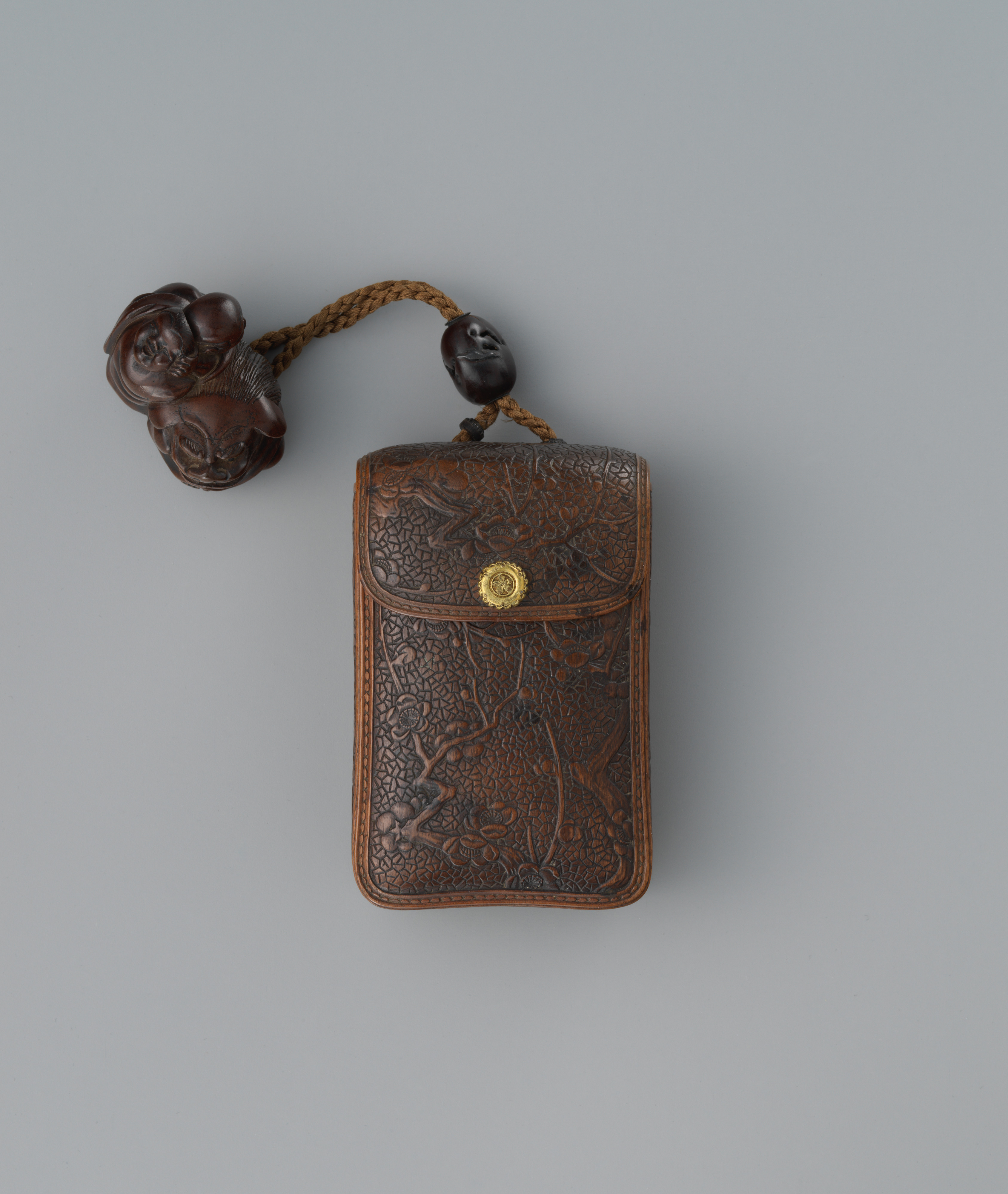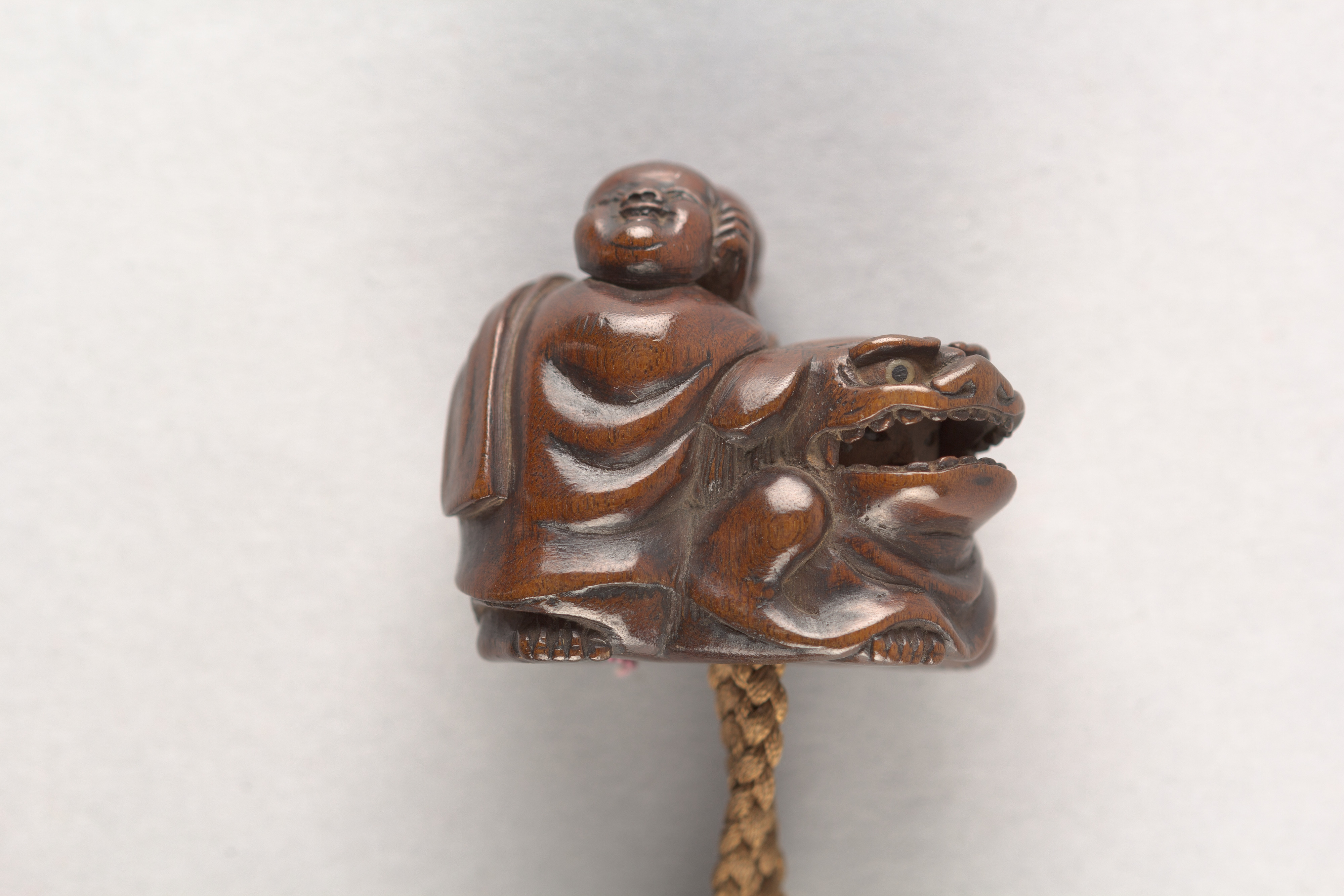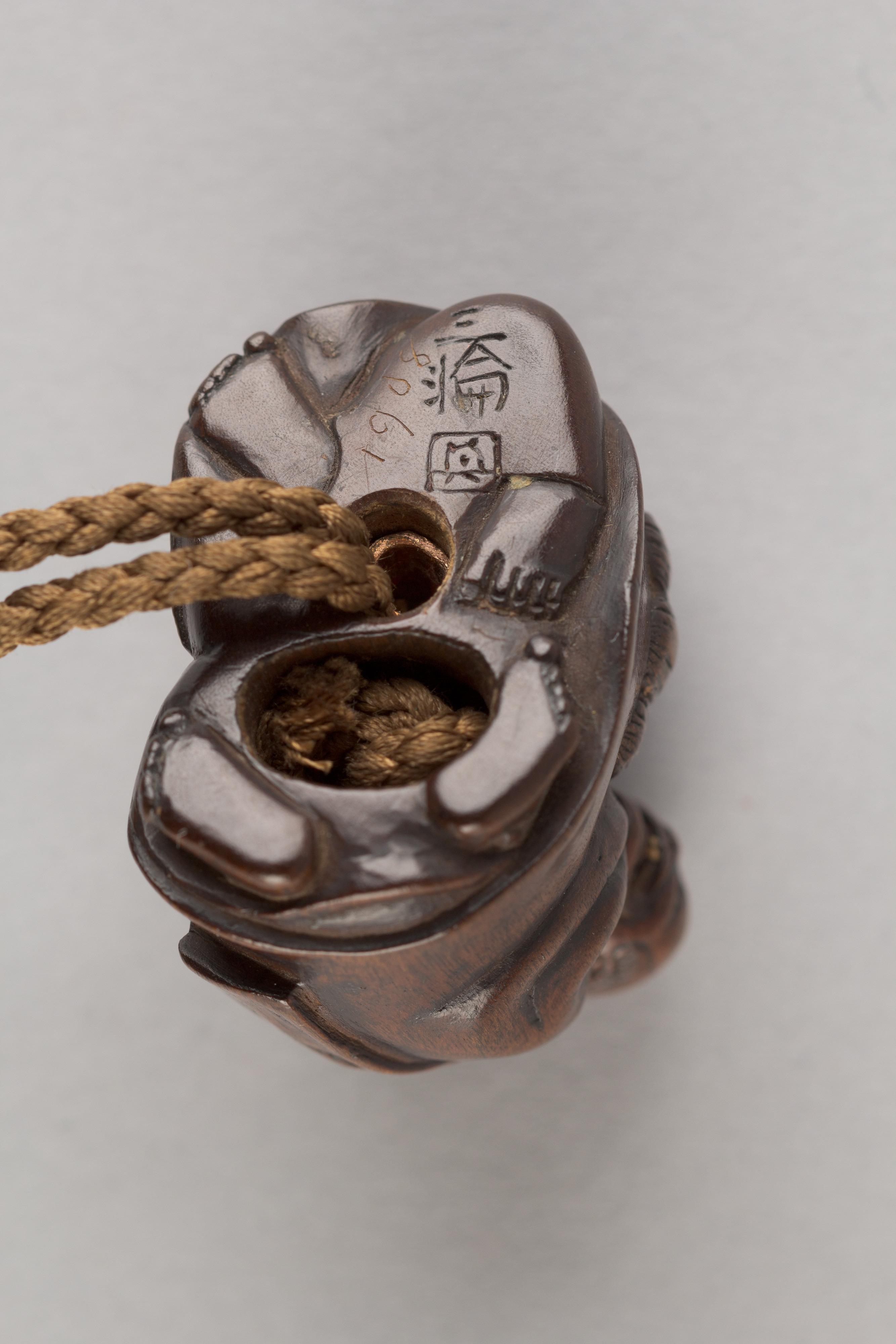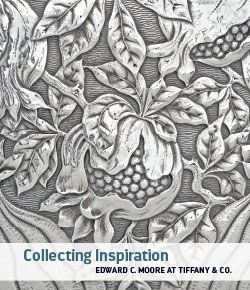Inrō in the Shape of a Leather Tobacco Case (Tabakoire) with Flowering Plum
Attributed to Matsuda Sukenaga Japanese
Inrō are small, light, tightly nested boxes worn hanging from a man’s obi sash, as a Japanese kimono had no pockets. The term’s literal meaning, "seal basket," probably refers to an early function, but later they held small amounts of medicine. Once they became fashion items, inrō were carefully selected according to the season or occasion and coordinated with the attached ojime (sliding bead) and netsuke (toggle) as well as with the kimono and obi. Moore and his team surely studied the rich motifs and sophisticated production methods of the inrō he collected.
The rare, early example in tortoiseshell was made at the beginning of the Edo period, when inrō were first developed. Several others from the seventeenth to the eighteenth century represent the early history and the high point of the object.
Due to rights restrictions, this image cannot be enlarged, viewed at full screen, or downloaded.
This artwork is meant to be viewed from right to left. Scroll left to view more.






